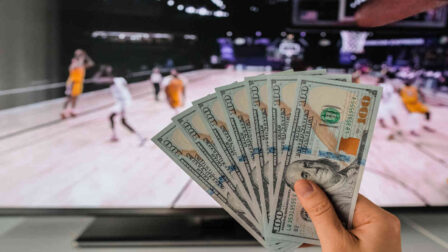How to Understand Betting Odds – A Quick Guide

3 minutes
Last Updated: November 13, 2022
If you are looking to get involved with sports betting, the first thing you need to learn is what betting odds are and how they are interpreted.
While this may seem obvious, you would be surprised how many punters are still clueless about this subject even though they place bets on a regular basis.
To help you not be one of them, today we break down betting odds and everything you need to know about them.
What Are Betting Odds?
There are a few different types of betting odds, with the most popular being decimal, American and fractional, but no matter in which format they are displayed, they all work in the same way.
Bookmakers like 789betting use betting odds to show the chance of a certain outcome happening in a match, game, or event.

As an example, let’s take a game with only two outcomes, say a tennis match, in which both players are of equal skill. In other words, they have the same chance of winning.
In that case, the odds for that match would be 50:50 and they should be displayed in odds (decimal) like this:
- Player A 2.00
- Player B 2.00
However, if you visit a sports betting site, you will see that for all matches in which the bookmakers think both players have the same chance of winning, the odds are displayed like this:
- Player A 1.90
- Player B 1.90
Why is that? Well, if the bookmakers set the odds at true odds, they wouldn’t make a profit in the long term.
How Bookmakers Make Money
One of the most common misconceptions is that bookmakers only make money when players lose a bet.
The really is that they make money each time a player places a bet on odds that are lower than the probability of that outcome happening.
For example, if one punter places $100 on Player A to win, and another one bets $100 on Player B to win, the bookmaker has taken in two bets for a total of $200 and there are two outcomes that can happen:
- Player A wins – The first punter wins $190, the second one loses $100, and the bookmaker profits $10 ($200 – $190)
- Player B wins – The second punter wins $190, the first one loses $100, and the bookmakers profits $10 ($200 – $190)
As you can see, in this scenario, no matter the outcome, the bookmakers are guaranteed to make a profit.For this reason, the goal of sports betting sites is to set the odds in such a way that they receive equal action on all outcomes of an event.
By doing this, they can make a profit by extracting a piece of value from each price and not worrying about the outcome of the match.
How to Use Betting Odds to Make a Profit
Now that you understand how betting odds work, it is time to talk about some of the ways you can use this knowledge to increase your bottom line.
The first thing that you can do to increase your profit is to use betting platforms with the lowest house edge.
On average, sports betting sites will deduct anywhere from 5% to 15% from the true value of the odds, so if you are planning to use the standard bookmaking platform, try to find those with around 5% house edge or less.
An even better solution would be betting exchanges. Betting exchanges allow bettors to bet against other punters and not against the house.

For their services on average, they charge around 2% fee which is significantly lower than what the standard bookmakers charge.However, the problem with betting exchanges is that there aren’t many of them. Additionally, you can also encounter problems with the liquidity of the betting pool.
The second betting strategy that can help you increase your chances of profitability is called value betting.
This strategy is used by profitable bettors all over the world and it implies betting only on matches that have higher odds of a certain outcome than the probability of that outcome happening.
For example, let’s say that a bookmaker offered odds higher than 2.00 on one of the players from the example above.
Placing a bet on that outcome would be considered value betting because the odds on the outcome would be higher than the mathematical chance of that outcome happening.

















